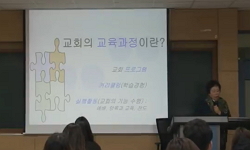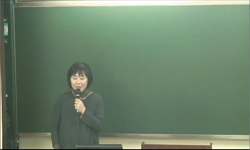본 연구는 드라마(행위)와 극(보기)의 수평축과 실제 이야기와 허구 이야기의 수직축을 기준으로 사분 모형을 구조화하여 연극치료의 모델을 통합하는데 목적이 있다. 사분 모형은 내적 관...
http://chineseinput.net/에서 pinyin(병음)방식으로 중국어를 변환할 수 있습니다.
변환된 중국어를 복사하여 사용하시면 됩니다.
- 中文 을 입력하시려면 zhongwen을 입력하시고 space를누르시면됩니다.
- 北京 을 입력하시려면 beijing을 입력하시고 space를 누르시면 됩니다.
https://www.riss.kr/link?id=A107766726
- 저자
- 발행기관
- 학술지명
- 권호사항
-
발행연도
2021
-
작성언어
-
-
주제어
경향성 ; 사분모형 ; 지향성 ; 통합모델 연극치료 ; MEET-4c ; Integrative Dramatherapy ; MEET-4c ; Orientation ; Quaternary ; Tendency
-
KDC
510
-
등재정보
KCI등재
-
자료형태
학술저널
-
수록면
64-95(32쪽)
- DOI식별코드
- 제공처
-
0
상세조회 -
0
다운로드
부가정보
국문 초록 (Abstract)
본 연구는 드라마(행위)와 극(보기)의 수평축과 실제 이야기와 허구 이야기의 수직축을 기준으로 사분 모형을 구조화하여 연극치료의 모델을 통합하는데 목적이 있다. 사분 모형은 내적 관계와 외적 관계, 의식과 무의식의 형태로 구분되며 필 존스의 9가지 핵심요소는 각각의 지향성을 가지고 있다. 이런 맥락에서 심리극, EPR, DvT, 역할이론, Sesame approach, 제의 연극, 5 stages, 감정 모델 연극치료의 지향성을 군집화하여 MEET-4c의 연극치료 통합모델을 도출하였다. 첫째, 극적 만남(Meeting)은 어려움을 고백(confess) 하는 관계적 공간으로 안전함을 제공하고 치료적 관계를 맺으며 참여자의 이야기를 할 수 있게 하는 준비 단계이다. 둘째, 극적 표현(Expression)은 감정을 담아(containment) 내는 정서적 공간으로 감정을 공감하게 하며, 참여자를 있는 그대로 비추는 거울의 역할과 담아주기의 역할을 하여 참여자가 자신을 스스로 개방할 수 있게 하는 탐색 단계이다. 셋째, 극적 발견(Exploration)은 극적 몸으로 대면(confrontation) 하는 역할의 공간으로 신체를 조율하게 하며, 극적 발견은 고정된 관념을 몸으로 새롭게 자각하게 하는 통찰 단계이다. 넷째, 극적 변형(Transformation)은 신념이 창조(creation) 되는 공간으로 치료적 공명을 만들게 하며, 창조된 신념으로 새로운 방향을 제시하고 시도하여 삶에 반영하는 실행 단계이다.
다국어 초록 (Multilingual Abstract)
The purpose of this study is to integrative models of Dramatherapy by structuring quadrants based on the horizontal axis of drama(doing) and theatre(seeing), the vertical axis of real and fictional stories. The quadrant model is divided into internal ...
The purpose of this study is to integrative models of Dramatherapy by structuring quadrants based on the horizontal axis of drama(doing) and theatre(seeing), the vertical axis of real and fictional stories. The quadrant model is divided into internal and external relationships, conscious and unconscious forms, and Phil Jones nine core elements have their own orientation. In this context, the integrated Dramatherapy model of MEET-4c s was derived by clustering the direction of psychodrama, EPR, DvT, Role theory, Sesame approach, Ritual theatre, 5 stages, and the emotional model. Firstly, dramatic meeting is a preparatory step that provides safety, establishes therapeutic relationships, and allows participants to talk about their stories as a confession of difficulties. Secondly, dramatic expression is an emotional space that empathizes with emotions and serves as a mirror that reflects clients as they are, allowing clients to open themselves up. Thirdly, dramatic exploration is a space for the role of confronting the body with a dramatic body, and dramatic exploration is an insight step that makes the body newly aware of fixed ideas. Finally, dramatic transformation is an implementation step that creates therapeutic resonance in a space where beliefs are created, and suggests new directions, attempts, and reflects them into life.
동일학술지(권/호) 다른 논문
-
- 한국연극예술치료학회
- 민주원(Min, Ju Weon)
- 2021
- KCI등재
-
교도소 청소년 재소자를 위한 연극치료 후 글쓰기에 나타난 언어적 특성
- 한국연극예술치료학회
- 배희숙(Bae, Hee Sook)
- 2021
- KCI등재
-
불안장애 증상완화에 관한 연극치료 고찰 : 성인 개인 작업 사례 중심으로
- 한국연극예술치료학회
- 박미리(Park, Mi Ri)
- 2021
- KCI등재
-
사회인지 관점에서 본 연극치료의 역할 경험 : 대인정보처리 모델을 기반으로
- 한국연극예술치료학회
- 정은선(Jung, Eun Sun)
- 2021
- KCI등재





 스콜라
스콜라






